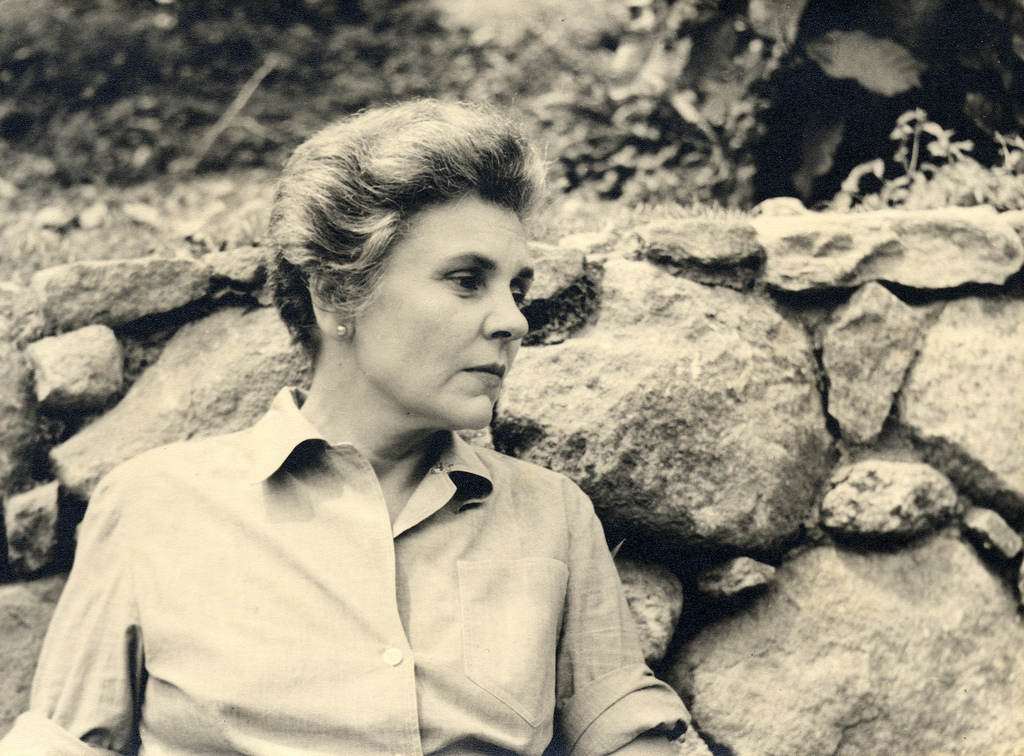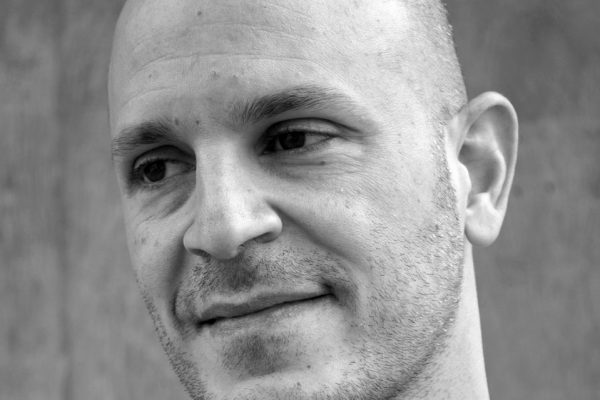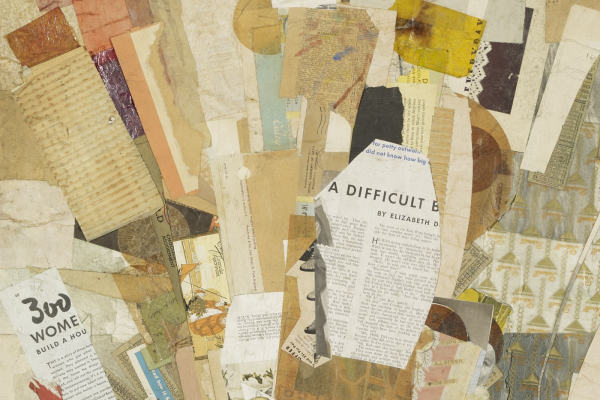The Complete Poems, 1927-1979
Elizabeth Bishop
Farrar, Straus and Giroux, $16.00
I knew Elizabeth Bishop’s poetry very well before I ever met her, and I always knew the poems better than the woman. I had early been drawn to the timbre of the voice in her first two books; had met her once or twice in literary groups, not the best place for breaking through shyness and differences in age and reputation. Much later, in the early 1970s, I offered her a ride from New York to Boston, where we were both then living. We found ourselves talking of the recent suicides in each of our lives, telling “how it happened” as people speak who feel they will be understood. In the course of this drive I forgot to take the turnoff at Hartford, and drove as far as Springfield without noticing. This conversation was the only one approaching intimacy I ever had with Elizabeth Bishop, and almost the only time I saw her alone.
I had felt drawn, but also repelled, by Bishop’s early work—I mean repel in the sense of refusing access, seeming to push away. In part, my difficulties with her were difficulties in the poetry, of Bishop as a young poet finding her own level and her own language. But in part they were difficulties I brought with me, as a still younger woman poet already beginning to question sexual identity, looking for a female genealogy, still not yet consciously lesbian. I had not then connected the themes of outsiderhood and marginality in her work, as well as its encodings and obscurities, with a lesbian identity. I was looking for a clear female tradition; the tradition I was discovering was diffuse, elusive, often cryptic. Yet, especially given the time and customs of the 1940s and 1950s, Bishop’s work now seems to me remarkably honest and courageous.
Women poets searching for older contemporaries in that period were supposed to look to “Miss” Marianne Moore as the paradigm of what a woman poet might accomplish, and, after her, to “Miss” Bishop. Both had been selected and certified by the literary establishment which was, as now, white, male, and at least ostensibly heterosexual. Elizabeth Bishop’s name was spoken, her books reviewed, with deep respect. But attention was paid to her triumphs, her perfections, not to her struggles for self-definition and her sense of difference. In this way, her reputation made her less, rather than more, available to me. The infrequency of her public appearances and her geographic remoteness—living for many years in Brazil, with a woman as it happened, but we didn’t know that—made her an indistinct and problematic life-model for a woman poet.
Some of the poems in her first book, North and South (1946), I found impenetrable: intellectualized to the point of obliquity (e.g., “The Map”), or using extended metaphor to create a mask (e.g., “A Miracle for Breakfast,” “The Monument,” “The Imaginary Iceberg”). That first book contains traces of Miss Moore, for example the coy use of quoted phrases within a poem, a mannerism Bishop soon discarded. And the overall strategy of many poems—the poem-about-an-artifact—owes too much to Moore. Bishop wrote such poems later in her life (see “12 O’Clock News” for example) but not often. More and more, her poems embodied a need to place herself in the actual, to come to terms with a personal past, with family and class and race, with her presence as a poet in cities and landscapes where human suffering is not a metaphor.
I have been fascinated by the diversity of challenges that The Complete Poems, 1927-1979 raises, the questions—poetic and political—that it stirs up, the opportunities it affords. In addition to the four volumes published in her lifetime, this edition—enhanced by the work of the gifted designer Cynthia Krupat—includes late poems which appeared in magazines after Geography III (1976); some posthumously published late poems, eleven poems written between the ages of sixteen and twenty-two, some uncollected later poems, and translations. Part of the value of such a collection is the chance it gives to see where certain obsessions and motives begin to take hold and how they work their way through a lifetime of poems; how certain echoes sound and die away, how style metamorphoses over time. The collection offers not just challenges and connections, but very deep pleasure. In her later work especially, Bishop is difficult to quote from because her poems are so often hung on one long thread; the progression of language and images does not readily separate into extracts. By the same token she is a wonderful poet to read aloud.
Criticism of Bishop in her lifetime was mostly appreciative of her powers of observation, her carefully articulated descriptive language, her wit, her intelligence, the individuality of her voice. I want to acknowledge the distinction of all these, the marvelous flexibility and sturdiness of her writing, her lack of self-indulgence, her capacity to write of loss and of time pat without pathos and with precision, as in poems like “Sestina,” “The Moose,” “Filling Station,” “First Death in Nova Scotia,” “At the Fishhouses.” I want to pay this homage and go on to aspects of her work which I have not yet seen discussed. In particular I am concerned with her experience of outsiderhood, closely—though not exclusively—linked with the essential outsiderhood of a lesbian identity; and with how the outsider’s eye enables Bishop to perceive other kinds of outsiders and to identify, or try to identify, with them. I believe she deserves to be read and valued not only for her language and images, or for her personality within the poems, but for the way she locates herself in the world.
Elizabeth Bishop was born in Worcester, Massachusetts in 1911, and lost her mother into a mental institution when she was five years old—a loss that was permanent. Her father was already dead. She migrated, not once, but several times: first to Nova Scotia to be raised by relatives, then back to the United States, then to Brazil, then back to New England after the death of Lota de Soares. Travel—not as in “vacation,” not as in “escape”—was from early on given for her.
Continent, city, country, society:
the choice is never wide and never free,
And here, or there . . . No. Should we have stayed at home,
wherever that may be?(“Questions of Travel”)
The child made “different” because parentless, the emigrant who thinks she would—understandably—“rather have the iceberg than the ship,” the woman writing, consciously or not, “against the male flood” (Woolf’s phrase), the lesbian writing under the false universal of heterosexuality, the foreigner who can take little for granted—all inhabit Bishop’s poetic voice and eye. Outsiderhood is a condition which most people spend (and are often constrained to spend) great energy trying to deny or evade, through whatever kinds of assimilation or protective coloration they can manage. Poetry, too, can serve as protective coloration; the social person who is the poet may also try to “pass,” but the price of external assimilation is internal division.
The pain of division is acutely present in some of Bishop’s earliest poems, notably in “A Word With You,” written when she was twenty-two, a tense, panicky, one-sided conversation during which a whole menagerie gets out of control:
Look out! there’s that damned ape again
sit silently until he goes
or else forgets the things he knows
(whatever they are) about us, then
we can begin to talk again.
In North and South, “the Weed” grows up through and divides the “frozen” heart so that it gushes two “rushing, half-clear streams.” “The Gentleman of Shalott” is a half-man whose other half is actually a reflection in a mirror. “The Colder the Air” and “Chemin de Fer” can be read as two bleakly counterpoised possibilities. The “huntress of the winter air” has everything under control, having reduced the world to her shooting gallery, in an icy single-mindedness; the speaker of the poem does not have such power, and beneath its frigid surface the poem quivers with barely suppressed rage. In “Chemin de Fer” the speaker is in an endangered position also, “Alone on the railroad track” while the “dirty hermit” firing his gun hits nothing, is impotent to carry through:
‘Love should be put into action!’
screamed the old hermit.
Across the pond an echo
tried and tried to confirm it.
What does it mean to put love into action? Especially in isolation, and in a world which does not confirm that imperative?
To know yourself as an outsider, as an “invert” in the old jargon, and to try to live, and love, in two worlds, is to dream of the impossible safe place, the upside-down park and foundation of “Sleeping on the Ceiling,” or in “Insomnia,”
that world inverted
where left is always right
where the shadows are really the body
where we stay awake all night,
where the heavens are shallow as the sea
is now deep, and you love me.
Or in “O Breath”—one of a sequence of four short, tensely packed love poems—there is the still ambivalent evocation of
something that maybe I / could bargain with
and make a separate peace beneath
within if never with
There is disturbance and tension in these “Four Poems” but there is also a glimpse, at least, of some kind of erotic freeing-up:
The face is pale
that tried the puzzle in their prison
and solved it with an unexpected kiss,
whose freckled unsuspected hands alit.
The first and title poem of A Cold Spring can be read as a record of a slow, deliberate, erotic unfolding, with a culminating image of “shadowy pastures” from which fireflies rise “exactly like the bubbles in champagne.” The final poem of this collection, “Shampoo,” celebrates a serious, tender practical rite between two women:
The shooting stars in your black hair
in bright formation
are flocking where,
so straight, so soon?
—come, let me wash it in this big tin basin
battered and shiny like the moon.
But Bishop left behind, in the last unpublished poem of the last year of her life, her own last word on division, decision, and questions of travel:
Caught—the bubble
in the spirit-level,
a creature divided;
and the compass needle
wobbling and wavering,
undecided.
Freed—the broken
thermometer’s mercury
running away;
and the rainbow bird
from the narrow bevel
of the empty mirror,
flying wherever
it feels like, gay!
(“Sonnet”)
Poems examining intimate relationships are almost wholly absent from Bishop’s later work. What takes their place is a series of poems examining relationships between people who are, for reasons of difference, distanced: rich and poor, landowner and tenant, white women and Black woman, invader and native. Even in her first book she had taken on the theme of the Black woman’s existence in a white world. The poem “Cootchie” addresses the fate of a Black woman who has died, presumably by drowning, perhaps by suicide. The white woman she has worked for is literally deaf but also self-absorbed; she will not “understand.” “Songs for a Colored Singer,” rumored to have been written with Billie Holliday in mind, begins:
A washing hangs upon the line
but it’s not mine.
None of the things that I can see
belong to me. . . .
This is a white woman’s attempt—respectful, I believe—to speak through a Black woman’s voice. A risky undertaking and it betrays the failures and clumsiness of such a position. The personas we adopt, the degree to which we use our lives already ripped-off and violated by our own culture, the problem of racist stereotyping in every white head, the issue of the writer’s power, right, obligation to speak for others denied a voice, or the writer’s duty to shut up at times, or at least to make room for those who can speak with more immediate authority—these are crucial questions for our time, and questions that are relevant to much of Bishop’s work. What I value is her attempt to acknowledge other outsiders, lives marginal in ways that hers is not, long before the Civil Rights movement made such awareness temporarily fashionable for some white writers.
Brazil, a multi-racial yet still racist and class-fragmented country, clearly opened up a further range of understanding for Bishop. Her earliest poems about Brazil grasp the presence of colonization and enslavement:
Just so the Christians, hard as nails . . .
in creaking armor, came and found it all,
not unfamiliar . . .
Directly after Mass
they ripped away into the hanging fabric
each out to catch an Indian for himself—
those maddening little women who kept calling,
calling to each other (or had the birds waked up?)
and retreating, always retreating, behind it.
(“Brazil, January 1, 1502”)
Some of Bishop’s best Brazilian poems are exercises in coming to terms with her location as a foreign woman living as part of a privileged class in a city of beggars and rich people. I am thinking of “Faustina,” “Manuelzinho,” “The Burglar of Babylon,” “ink Dog.” In “Faustina” she draws the scene of a white woman dying in her “crazy house” with her white hair, among “white disordered sheets,” in a white “chamber of bleached flags,” tended by a Black woman servant. The narrator is confronted by the “conundrum” of white power, the history of what whites have done to Black people, and the vulnerability of this particular dying old woman. It is a poem of contradictions, and about extremes of possibility between the two women: a dream of “freedom at last, a lifelong /. . . dream of protection and rest” vs. the “unimaginable nightmare that / never before dared last / more than a second.” Extremes defined from a white woman’s perspective, but at least acknowledging the “acuteness of the question.” I cannot think of another poem by a white woman, until some feminist poetry of the last few years, in which the servant-mistress dynamic between Black and white women has received unsentimental attention.1
Bishop precedes “Manuelzinho” with the note: “A friend of the writer is speaking,” as if partly to dissociate herself from the speaker, a liberal landowner addressing a squatter-tenant. Manuelzinho, the tenant is seen as improvident, touching, exasperating, picturesque—qualities traditionally attributed to the colonized; the landowner is essentially benign, ruefully resigned to the balance of power in which Manuelzinho must cajole and beg for handouts. In this poem, Bishop places herself between, but not equidistant from, landowner and tenant. There is no way for her to be equidistant; the poem reads, after all, from the landowner’s point of view, even though it also exposes her or him. The poem explores that perspective leaving the reader free to accept or reject it. By contrast, we live through much of “The Burglar of Babylon” in the Burglar’s skin, and it’s clear that despite the poem’s deadpan tone, we are not invited to stay neutral:
He saw the long white beaches
And people going to swim,
With towels and beach umbrellas,
But the soldiers were after him . . .The rich with their binoculars
Were out again, and many
Were standing on the rooftops
Among TV antennae.
Micucu, three times escaped from jail, with a vague array of charges against him, is ambushed by the militia and shot. Soon after his death the soldiers are out on the hills again, searching for two more “enemies of society.” The police overkill is ridiculous, the drama is recounted in flat-voiced metres. No heroes to this ballad, only victims. Burglars are caught and killed, the essential state of things remains the same:
On the fair green hills of Rio
There grows a fearful stain:
The poor who come to Rio
And can’t go home again . . .There’s the hill of Kerosene
And the hill of the Skeleton,
The hill of Astonishment,
And the hill of Babylon.
Finally, there is the 1979 poem, “Pink Dog,” sub-headed in brackets, “Rio de Janeiro”—a brilliantly bitter, indignant satire of the notion that the wretched of the earth are themselves to blame for their misery and should therefore try to disguise themselves (or assimilate) for their own survival.
The hairless female dog with scabies is advised to dress up in a Carnival costume and dance the samba:
(A nursing mother, by those hanging teats.)
In what slum have you hidden them, poor bitch,
while you go begging, living by your wits? . . .If they do this to anyone who begs,
drugged, drunk, or sober, with or without legs,
what would they do to sick, four-legged dogs?
In selecting the poems I have discussed here, in limited space, I have reluctantly neglected the marvelous Nova Scotia poems, as well as many others even better known, such as “Roosters,” “The Fish,” “Visits to St. Elizabeth’s” (also a seriously political poem), “In the Waiting Room,” “One Art.” But it seems to me that Bishop’s value for us is more complex and multi-faceted than we may have been aware, and I have wanted to suggest new ways of entering her work. Moreover, it is only now, with a decade of feminist and lesbian poetry and criticism behind us, and with the publication of these Complete Poems, that we can read her as part of a female and lesbian tradition rather than simply as one of the few and “exceptional” women admitted to the male canon. Too often, the “exceptional” or token outsider is praised for her skill and artistry while her deep and troubled connections with other outsiders are ignored. (This is itself part of the imperative to be assimilated.) It is important to me to know that, through most of her life, Bishop was critically and consciously trying to explore marginality, power and powerlessness, often in poetry of great beauty and sensuous power. That not all these poems are fully realized or satisfying simply means that the living who care that art should embody these questions have still more work to do.
Originally published in the June 1984 issue of Boston Review








